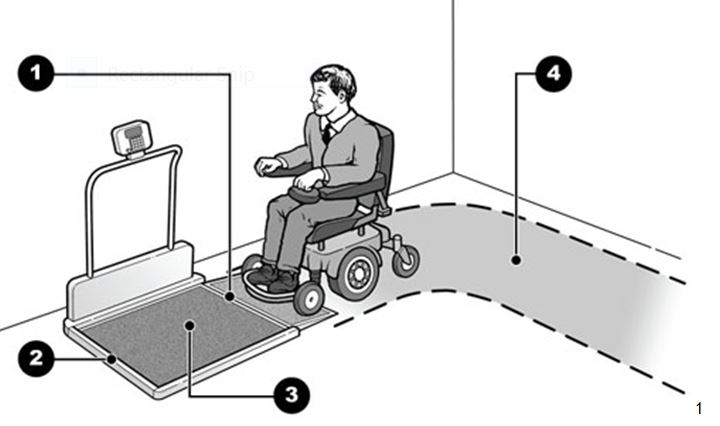By
June Isaacson Kailes, Associate Director
Harris Family
Center for Disability and Health Policy
Western University of Health Sciences, Pomona, California
Update - 12.30.16
Accessible scales are useable by all people with and without disabilities including wheelchair users, people with conditions that interfere with mobility, walking, climbing, using steps (joint pain, short stature, pregnancy, fatigue, respiratory and cardiac conditions, post-surgical conditions, orthopedic injuries; and people who use mobility devices (e.g., canes, crutches, walkers).
When people are not weighed, they receive a lesser quality of health care. Without an accurate and current weight measurement, chances of missed diagnosis or incorrectly prescribed medication increase. It is well documented that weight gain and obesity can be linked to:
-
Cardiovascular Disease;
-
High Blood Pressure;
-
Unhealthy Cholesterol Levels and Lipid Levels;
-
Diabetes;
-
Cancer;
-
Negative impacts on muscles and bones;
-
Reproductive and hormonal problems;
-
Effects on the liver and lungs; and
-
Many other conditions.i
Do not ask people to guess their weight as the chances of getting an accurate answer are low. It also translates into unequal & inadequate care.
You should use an accessible scale with people who…
-
Have difficulty standing or maintaining balance on a standard scale platform.
-
Have difficulty or are unable to step onto a standard scale.
-
Weight is higher than the standard scale's limit.
Scale Placement
Wheelchair scales require 2x the (straight-route) length of the scale for a wheelchair or scooter user to enter and exit. The approach to the scale route should not be blocked by obstructions, protruding objects, or fire exits. The route should be away from high foot traffic areas and should not block frequently used room entrances.
-
Sloped surface provides access to scale platform -- no abrupt level changes at floor or platform.
-
Edge protection at drop off.
-
Large platform to accommodate various wheelchair sizes.
-
Provide maneuvering space to pull onto and off scale.
1 Access to Medical Care for Individuals with Mobility Disabilities, U.S. Department of Justice, Civil Rights Division, May 2010
-
Remove excess weight from the wheelchair, such as book bags, backpacks, etc.
-
Have individuals roll their wheelchair or scooter onto the scale and lock the brakes for safety.
-
Weigh individual and wheelchair together.
-
Have the individual roll off the scale and then help the individual transfer to a safe location, e.g., chair, hospital bed or exam table.
-
Roll the empty wheelchair or scooter back onto the scale and weigh. Then, document weight in the individual’s record for future use. (NOTE: There is no standard weight for a scooter or wheelchair)
-
Subtract the weight of the empty mobility device from the combined weight of the individuals’ and their devices to obtain their weight.
-
Document individuals weight in their record.
-
Assist individuals in transferring back into their device.
*Remember to ask individuals in future visits if they are using the same device. If yes, then you do not need to re- weigh their device again. If no, you will still need to weigh the individual in their wheelchair at every visit, as you would for all people.
Weighing people with limited mobility and / or who have difficulty maintaining their balance on a standard scale:
-
Place a chair (preferably a chair with arms) on the scale and document its weight.
-
Have the individual sit on the chair.
-
Weigh the individual and chair together.
-
Provide help, as needed, to the individual throughout weight measurement procedure. Carefully monitor the individual and watch for any balance support they may need.
-
Subtract the chair’s weight from the combined weight of the chair and individual to get the individual’s weight.
Remember, anyone and everyone can use an accessible scale!
It is accessible to all your people!
i Weight Control and Diet, December 2001, Reuters Health (RH) http://www.reutershealth.com/wellconnected/doc53.html.
© Kailes, J.I Tips for Weighing People Using an Accessible Scale, Update 12.30.16, Harris Family Center for Disability and Health Policy at Western University of Health Sciences, Pomona, California.
Permission is granted to share and distribute this publication provided you:
-
Make no changes to the original document
-
Include proper copyright citation (see above)
-
Do not sell the contents for profit
-
Notify June Kailes of use: jik@pacbell.net



User Comments/Questions
Add Comment/Question